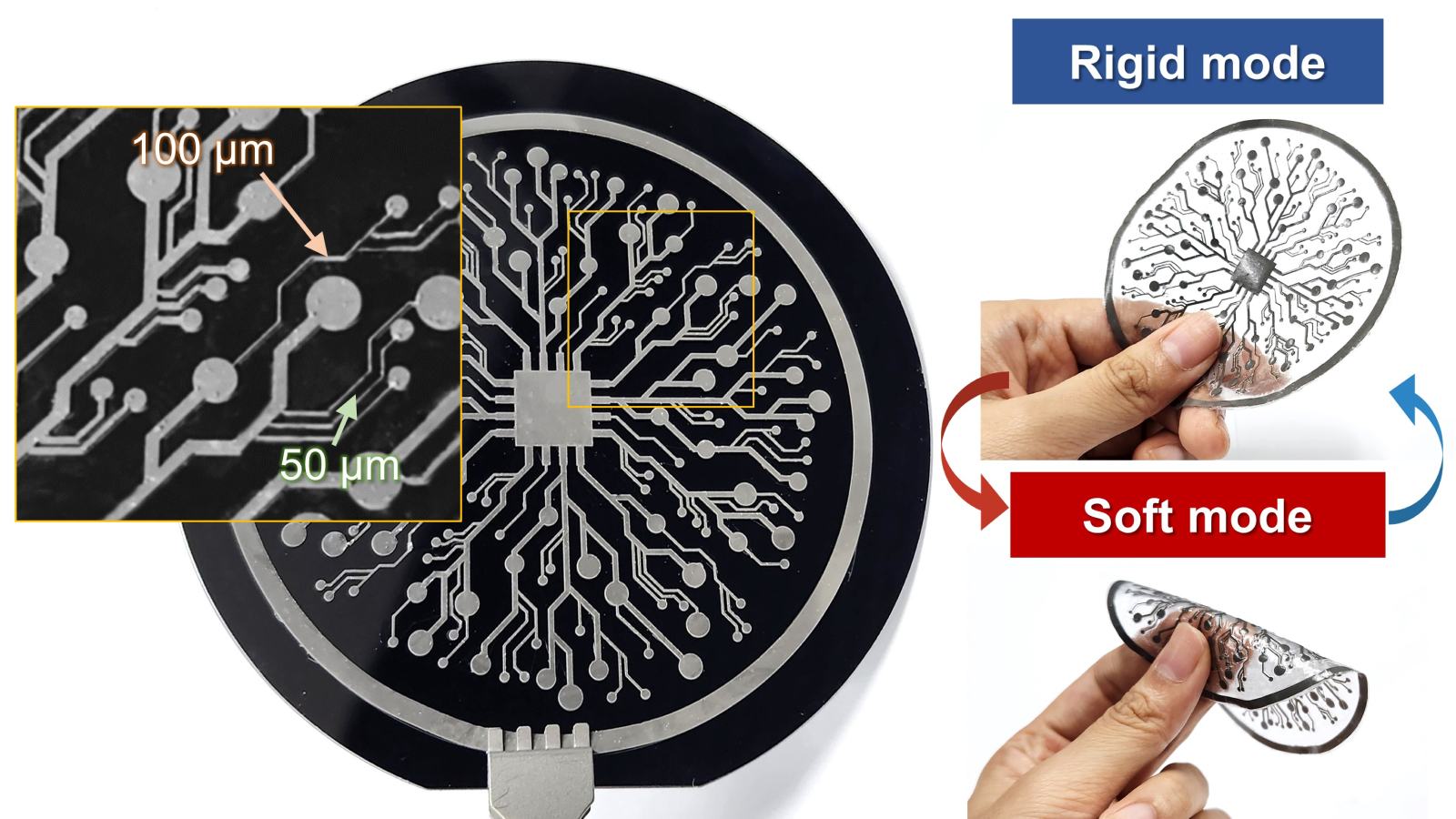Scientists have developed a new kind of “electronic ink” that can be used to print electronic circuits capable of switching between rigid and soft states when heated.
The technology could pave the way for next-generation electronic devices that change shape or stiffness depending on how and where they’re used, from medical implants that soften inside the body to flexible robotics.
The ink combines gallium, a metal that’s solid at room temperature but melts just below body temperature — 98.6 degrees Fahrenheit( 37 degrees Celsius) — with a polymer-based solvent that breaks down when gently heated. The result is a stable, printable substance that becomes conductive after heating and can change its stiffness in response to temperature.
The findings were published May 30 in the journal Science Advances.
“This opens up new possibilities for future personal electronics, medical devices and robotics,” study co-author Jae-Woong Jeong, professor of electrical engineering at the Korea Advanced Institute of Science and Technology (KAIST), said in a statement.
Related: Unique transistor ‘could change the world of electronics’ thanks to nanosecond-scale switching speeds and refusal to wear out
Most electronics today fall into one of two camps: rigid devices like smartphones and laptops, which offer performance and durability at the cost of flexibility; or soft systems like wearables, which are more comfortable to wear but can be harder to fabricate precisely or integrate with more complex components.
From hardware to soft-wear
So-called variable-stiffness electronics aim to bridge this gap, enabling devices to shift between hard and soft states as needed.
Gallium has long attracted interest in this area because of how differently it behaves in solid and liquid forms. But using it for printed electronics has proven difficult due to its high surface tension and tendency to oxidize when exposed to air, forming a kind of crust that prevents it from bonding or spreading properly.
To address this, the researchers developed a process for dispersing microscopic gallium particles into a polymer matrix — essentially a flexible, ink-like base — using a solvent called dimethyl sulfoxide (DMSO).
When the printed circuit is gently heated, the solvent breaks down and creates a slightly acidic environment. This strips away the oxide layer from the gallium particles, enabling them to melt and merge to form conductive pathways.
The resulting ink can be used to print features as small as 50 micrometers (0.002 inches or 0.005 centimeters) — thinner than a human hair — and can alternate between plastic-like hardness and rubbery softness as needed. The researchers said that the material became more than 1,400 times softer when warmed during tests.
The team built two working devices to demonstrate how the bendy technology might be used. One was a wearable health device that behaves like a rigid portable electronic at room temperature, then softens on contact with skin to improve comfort. The other was a flexible brain implant that remained rigid during surgery so it could be precisely inserted, and then softened once inside the brain to help reduce irritation and inflammation.
The ink can be used with common manufacturing techniques such as screen printing and dip coating, meaning it could be used in larger-scale or 3D-printed electronics in the future, the researchers said.
“The core achievement of this research lies in overcoming the longstanding challenges of liquid metal printing through our innovative technology,” Jeong said in the statement. “By controlling the ink’s acidity, we were able to electrically and mechanically connect printed gallium particles, enabling the room-temperature fabrication of high-resolution, large-area circuits with tunable stiffness.”
